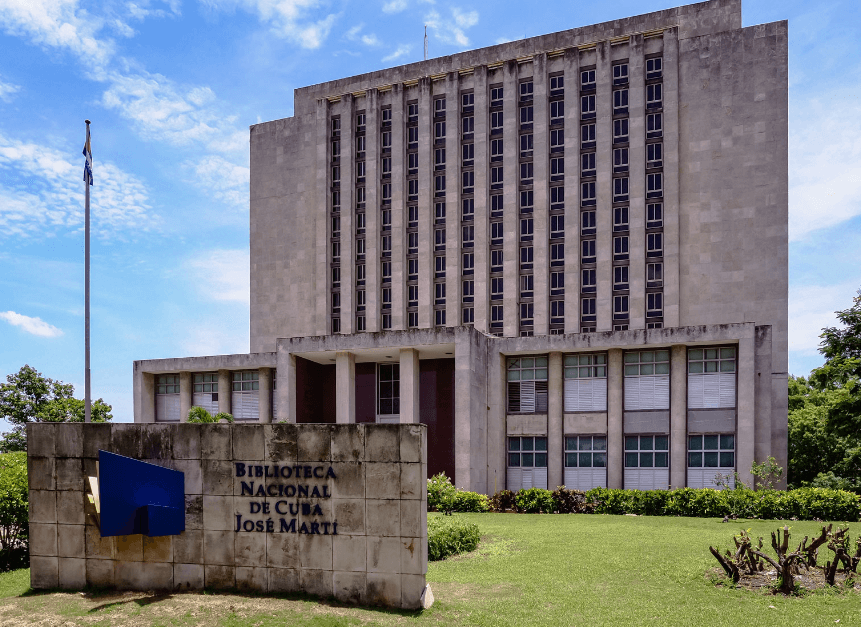The Cuba National Library, also known as the National Library José Martí, stands as a magnificent testament to the rich literary and cultural heritage of Cuba. Nestled in the heart of Havana, this iconic institution is a treasure trove of knowledge, housing an extensive collection of books, manuscripts, and artifacts that chronicle the nation's history, identity, and intellectual pursuits. In this comprehensive article, we will delve into the history, significance, offerings, and experiences that await visitors at the Cuba National Library. Join us on this enlightening journey through the corridors of knowledge and culture.
The Cuba National Library, a bastion of knowledge, serves as a beacon for scholars, researchers, and enthusiasts from around the world. Its impressive architecture and vast collection make it a prominent symbol of Cuba's dedication to intellectual growth and cultural preservation.
Historical Roots of the Cuba National Library
The roots of the National Library trace back to the early 19th century when efforts to establish a repository of knowledge gained momentum. It officially came into being as the National Library José Martí in 1901, named after the renowned Cuban national hero and poet.
Architectural Marvel: The Library’s Building and Design
The library's architectural splendor is a blend of neoclassical and eclectic styles, creating an awe-inspiring structure that stands as a testament to Cuba's artistic and cultural heritage.
Cuba National Library: Collections that Chronicle Cuba’s Story
Preserving Ancient Manuscripts
The library diligently preserves ancient manuscripts that offer insights into Cuba's pre-colonial and colonial eras, shedding light on the island's indigenous cultures and colonial history.
Connecting with Cuban Literature
A vast array of Cuban literary works, from classic novels to contemporary poetry, allows visitors to immerse themselves in the nation's literary journey.
Exploring Cuban History and Culture
The library's comprehensive collection of historical documents, maps, and artifacts offers a deep dive into Cuba's multifaceted history and diverse cultural tapestry.
The Role of the National Library in Promoting Literacy and Education
The National Library plays a pivotal role in fostering literacy and education, supporting initiatives that promote reading and learning among people of all ages.
Cuba National Library: Digital Age Advancements
In the digital age, the National Library has embraced technology, providing online resources, digital archives, and virtual exhibitions that enhance accessibility for a global audience.
Cuba National Library: Visitor Information and Services
Navigating the Library’s Layout
Visitors are greeted with a well-organized layout that facilitates seamless exploration of the library's diverse sections and collections.
Participating in Engaging Events
The library hosts a myriad of events, including author readings, lectures, and workshops, creating a dynamic space for intellectual exchange.
Utilizing Research and Reference Services
Scholars and researchers benefit from the library's research and reference services, which provide expert assistance in accessing valuable information.
National Library José Martí: A Hub of Cultural Exchange
The library serves as a hub for cultural exchange, welcoming international scholars and fostering collaborations that enrich Cuba's cultural landscape.
Cuba National Library: Preservation Efforts and Conservation Initiatives
Dedicated to preserving its valuable collections, the library employs conservation efforts to safeguard rare and delicate materials for future generations.
FAQs: Unveiling the Mysteries of Cuba National Library
- Is photography allowed within the library premises?
Yes, photography is permitted in designated areas for personal use.
- Can I borrow books from the National Library?
The National Library primarily operates as a reference library, so borrowing books is generally not allowed. However, there are exceptional cases for academic research.
- Are there any admission fees for visiting the library?
No, entry to the National Library is free of charge for both local and international visitors.
- How can foreign researchers access the library's special collections?
Foreign researchers can submit a formal request through the library's website to access special collections. Appointments may be required.
- Does the library have resources in languages other than Spanish?
While the majority of resources are in Spanish, the library is actively working to expand its collection of materials in other languages to accommodate diverse research interests.
Conclusion
The Cuba National Library, National Library José Martí, stands as a testament to Cuba's commitment to preserving its cultural and intellectual heritage. With its diverse collections, educational initiatives, and engaging events, it continues to inspire generations and contribute to the nation's intellectual growth.
In conclusion, the National Library José Martí is not only a repository of books and artifacts but also a living embodiment of Cuba's history, literature, and culture. Its enduring legacy as a center of knowledge and learning makes it a must-visit destination for anyone seeking to explore the heart and soul of Cuba's intellectual journey.
References
- "Cuba National Library." UNESCO Digital Library. Accessed from: https://unesdoc.unesco.org/ark:/48223/pf0000121919
- "National Library José Martí." Official Website. Accessed from: https://www.bnjm.cu/
- "Preserving Cuba's Literary Heritage." Library of Congress. Accessed from: https://www.loc.gov/item/98507233/
- "Exploring Cuban Literature: A Journey through Time." Cuban Heritage Collection, University of Miami Libraries. Accessed from: https://www.library.miami.edu/chc/exhibits/explore-cuban-literature.html
- "Cuban History and Culture: A Glimpse through Archival Collections." Digital Public Library of America. Accessed from: https://dp.la/exhibitions/exhibits/show/cuban-history
